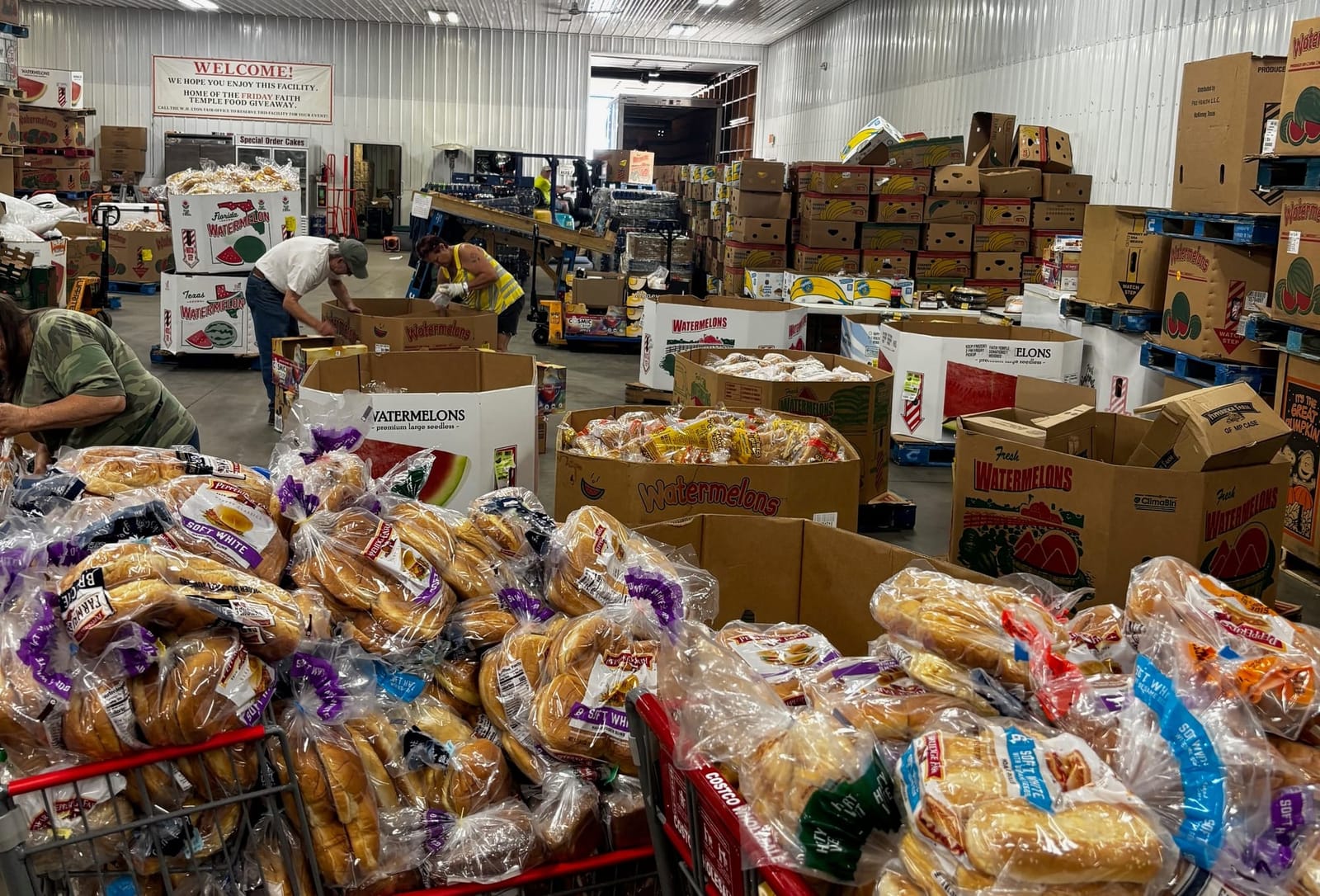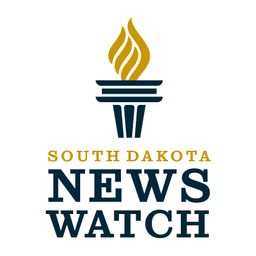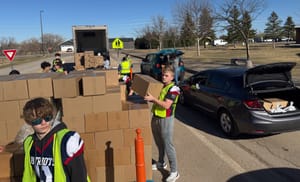Forty South Dakota organizations have formed a collaborative to help people who don't have enough to eat at a time of reduced government support and increased demand.
A "meeting place" is how Jennifer Folliard characterizes the South Dakota Healthy Nutrition Collaborative. She's a steering committee member and coordinator for the SDHNC, which launched in September.
It's the first organization of its kind in the state dedicated to helping the 113,500 South Dakotans who were food insecure in 2023, meaning they had limited or inconsistent access to enough food, according to the most recent data from Feeding America.
The goal is to improve their health through education, sharing resources and aligning actions across the state, Folliard said.
"We've sort of been a place to come together and try to figure out solutions as the crises hit," she said.
"We are people coming together that want to make systems change and want to do better on programming," Folliard added. "So it's a space for people to come together to say, 'Hey, these are our priorities. We are a bunch of organizations throughout the state. We recognize food insecurity's an issue, and how do we make changes that are going to be systemic?'"
Food programs expanding statewide
Feeding South Dakota is one of the SDHNC partners and plays a big role because it's the state's largest food relief network.
The nonprofit operates out of three distribution centers in Rapid City, Pierre and Sioux Falls. Through its programs and partnerships, it distributes food to pantries in all 66 counties, said Feeding South Dakota representative Stacey Andernacht.
In the 2024 fiscal year, Feeding South Dakota distributed 11.7 million meals and served 12,772 families through its 263 community partners, according to data from its website.
Feeding South Dakota asked the South Dakota Legislature for $3 million on July 23 to help fill the gap made from the U.S. Department of Agriculture cancelling 1.5 million pounds of food normally allocated to Feeding South Dakota.
Bread Break is another member of the collaborative. It is a growing Sioux Falls nonprofit that collects usable, extra food from restaurants, gas stations, grocery stores and other businesses and delivers it to more than 30 receiving partners like food banks and churches.
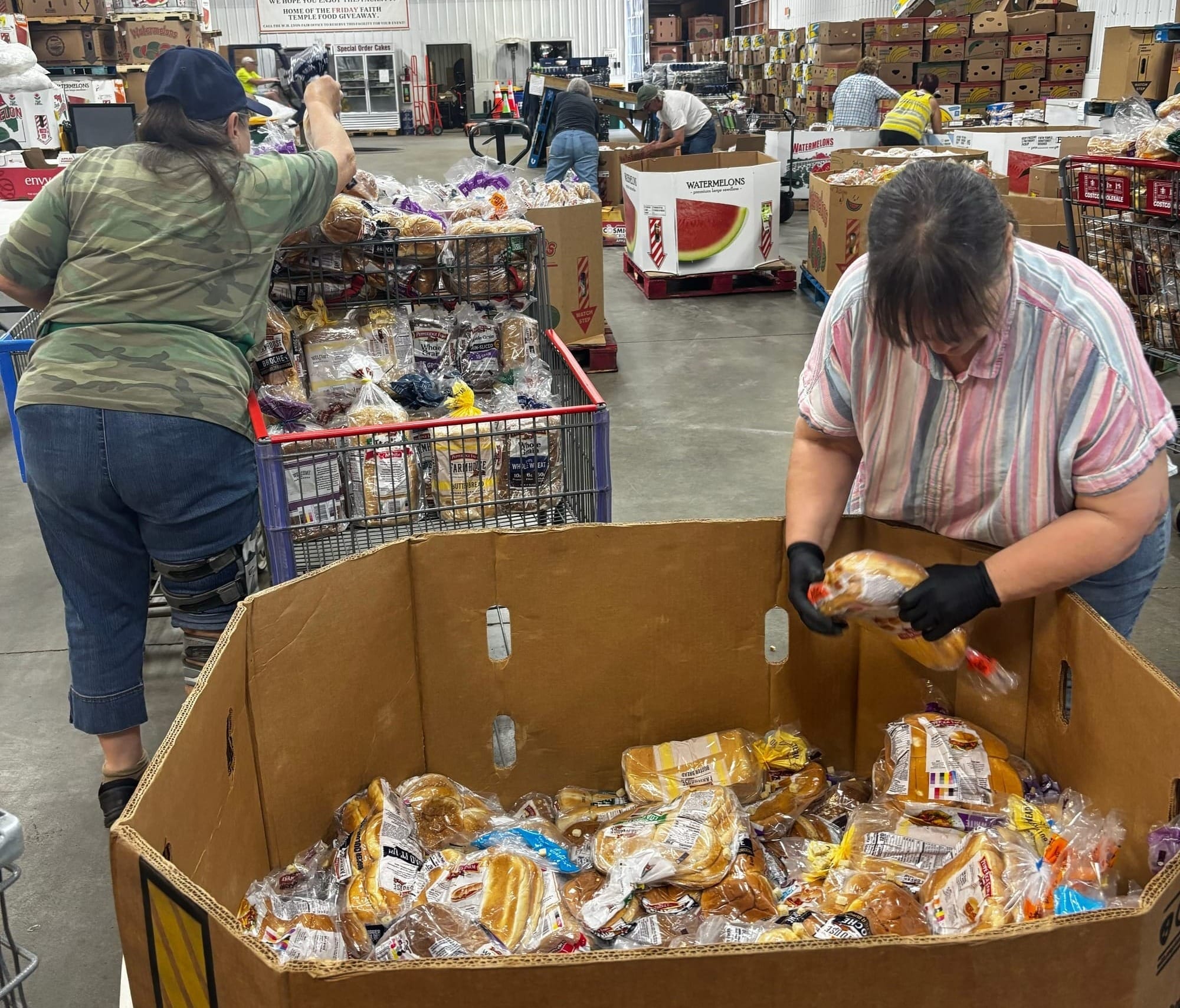
Executive director Pam Cole said she's seen an increase in people using community solutions during the past few years, and recently, the need has increased more rapidly.
"The rate is definitely increasing exponentially at this point. It was already hard for people, and now it's just untenable for people," Cole said. "I don't know how they're making it through the day, and it's getting to a critical point."
Join other South Dakotans and support statewide storytelling.
Last year, Bread Break recovered more than 300,000 pounds of food and is on track to recover at least 400,000 pounds this year, Cole said.
Bread Break's goal is to help the growing need by expanding out from Sioux Falls to other towns throughout the state. Cole is in talks with people in Rapid City to try and get the program started there.
"We are exclusively in Sioux Falls right now, but we have a lot of interest in taking our model to other cities," Cole said. "I've had at least three different people reach out to me in the last two months about Rapid City needing something like this."
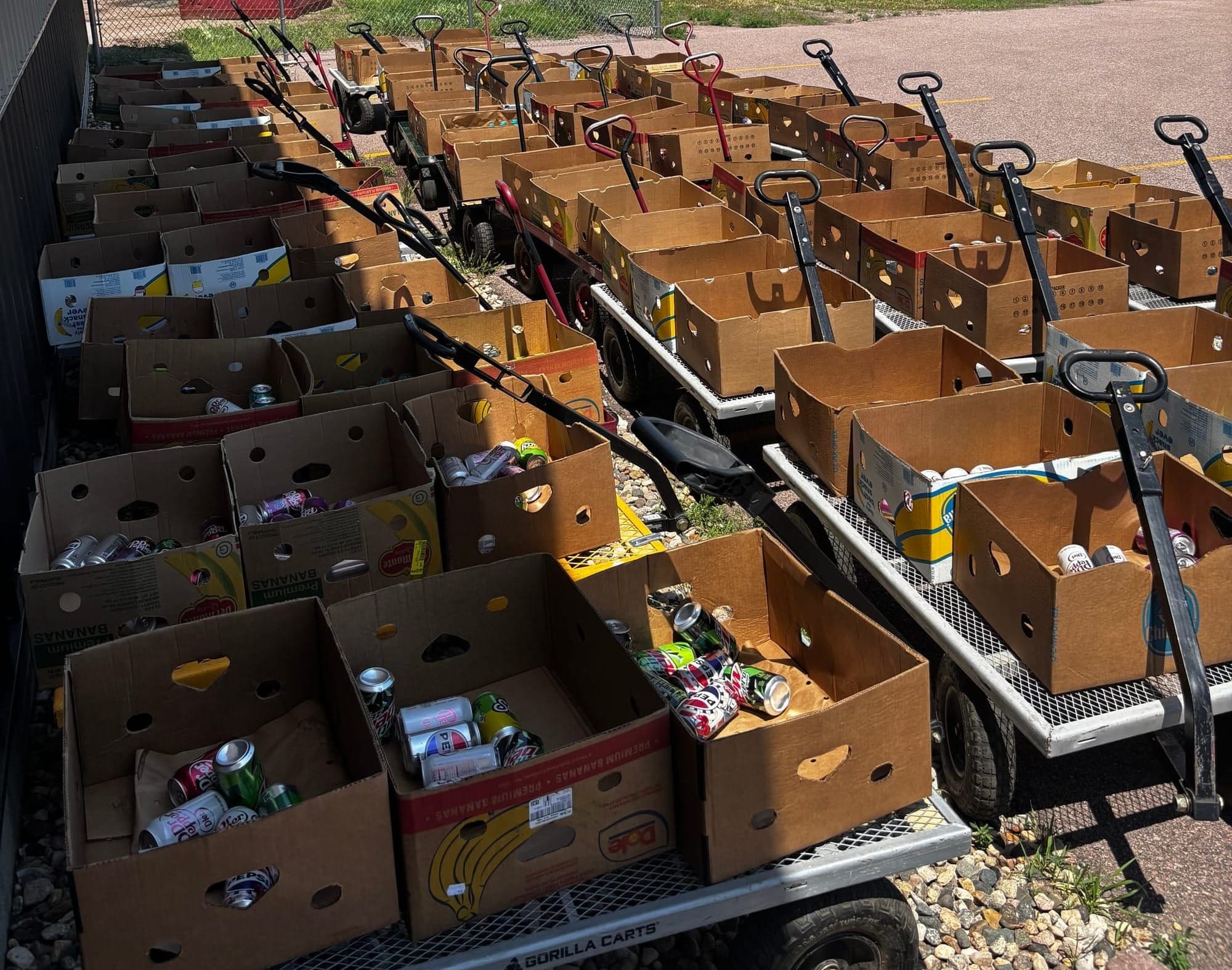
According to the United States Environmental Protection Agency, 40% of food in the U.S. is lost or wasted annually. That equates to around $218 billion, or 1.3% of the country's gross domestic product.
"I fully believe that our food system in the United States is broken and needs great repair. We should be studying this at the federal level. We should be making a concerted effort to really look at what's going wrong," Cole said. "That is an enormous amount of waste. Yes, I know it's a drop in the bucket. But if we can't take care of this, I'm not sure what we really can take care of."
The insecure state of food insecurity
Sioux Falls resident Traci Praul uses community solutions to combat her own food insecurity.
She relies on Supplemental Nutrition Assistance Program (SNAP) benefits, formerly called food stamps, and attends Church on the Street, which also provides food and laundry services.
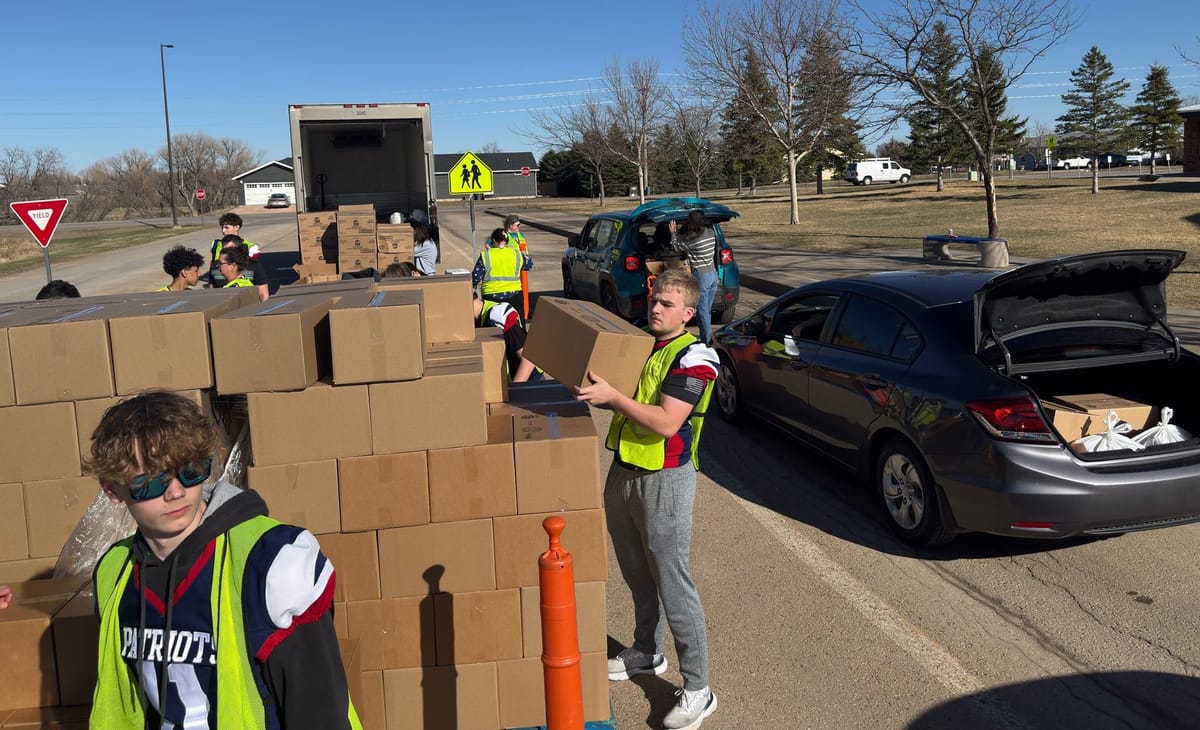
When she first moved back to Sioux Falls from Arizona, she lived at the Union Gospel Mission homeless shelter.
Praul feels covered by her SNAP benefits. However, she said rising costs of food because of inflation in recent years have made it harder on everyone.
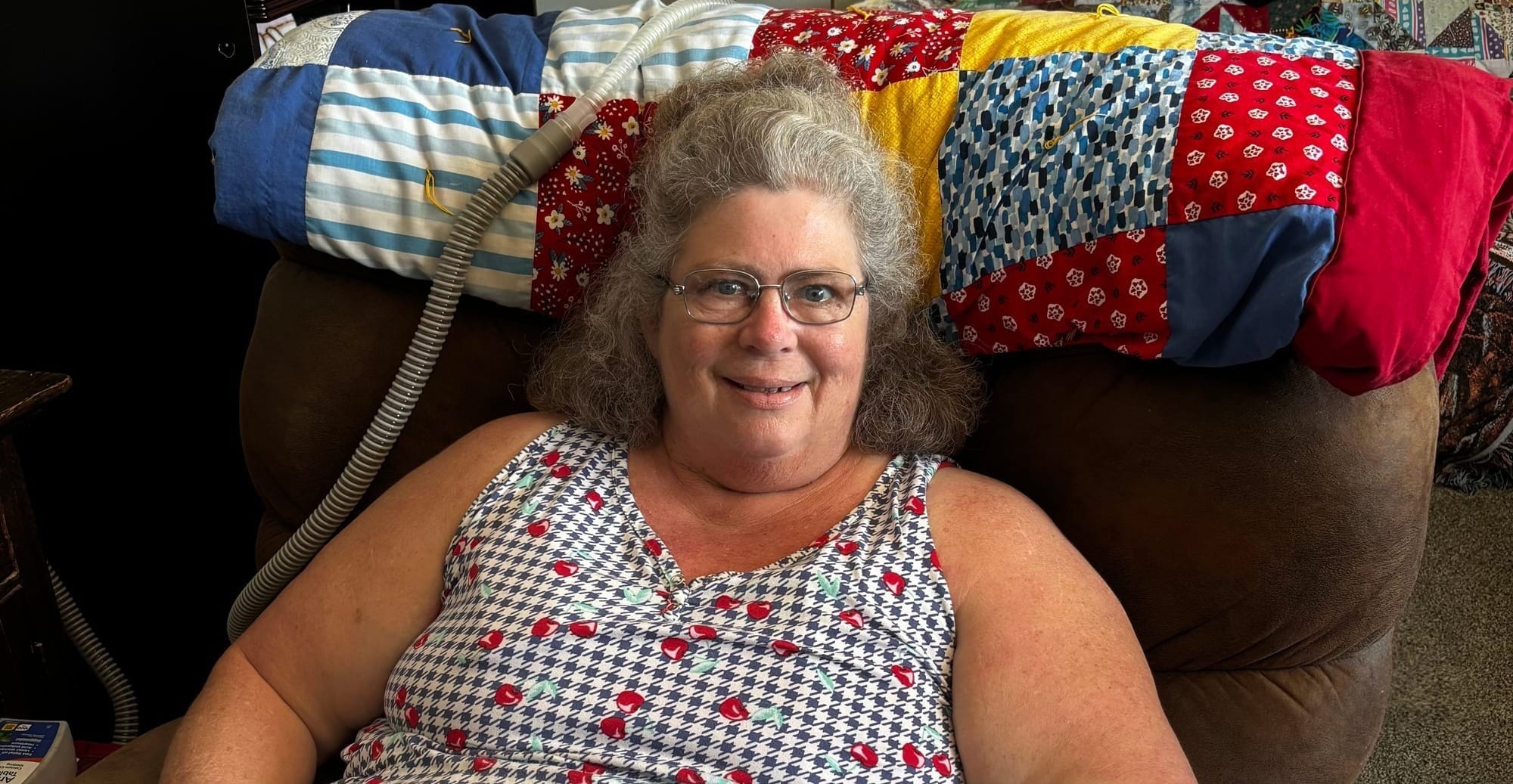
"It's not knowing from one moment to the next what DSS (the Department of Social Services) or the federal government is going to do," Praul said. "I've heard a lot of people complaining, 'Wait a minute, we need this (SNAP), 'cause we're living paycheck to paycheck.'"
The collaborative partners
South Dakota has food pantries and other organizations across the state that help people who are hungry, some of which are below.
South Dakota Healthy Nutrition Collaborative
Here are the organizations that comprise the South Dakota Healthy Nutrition Collaborative, some of which have multiple locations.
- American Heart Association
- Avera Health
- Black Hills Area Community Foundation
- Bread Break, which collects and distributes unused food in Sioux Falls and is looking to expand to Rapid City
- Center for the Prevention of Child Maltreatment
- Cheyenne River Buffalo Company
- Clean Produce Unlimited
- Community HealthCare Association of the Dakotas
- Dakota Fresh Food Hub
- Dakota Rural Action
- Delta Dental
- Farm to School Cheyenne River
- Feeding South Dakota, which has distribution centers in Rapid City, Pierre and Sioux Falls and serves all 66 counties
- Helpline Center, a directory for helpline numbers for those in crisis
- Jack's Cupboard, a food pantry at South Dakota State University
- Kids Count South Dakota
- Midwest Dairy
- Monument Health
- NAACP
- Sanford Health
- South Dakota Association of Healthcare Organizations
- South Dakota Department of Health
- South Dakota's Nutrition Experts
- South Dakota State University
- Sioux Falls Thrive
- South Dakota Urban Indian Health
- Team Buche Cares
- The Grove Projects
- University of South Dakota School of Health Sciences
Sioux Falls Hunger
Sioux Falls Hunger is another effort to coordinate programs and communicate when food is available. Here are its members:
- Bishop Dudley Hospitality House, a homeless shelter that provides showers, laundry services and serves lunch
- Faith Temple Food Giveaway is the largest one-day food giveaway in the state, according to lead pastor Jeff Hayes. Volunteers gather food into boxes and put them in people's cars every Friday, serving more than 4,000 every week.
- Feeding South Dakota
- Food to you is a mobile food pantry that runs on the first four Thursdays of the month.
- Messiah New Hope is a food pantry that runs from 3-5 p.m. on Thursdays.
- Nightwatch serves meals on Sundays, Mondays and Tuesdays.
- Red Door Church serves breakfast on Sundays.
- The Banquet serves breakfast and dinner Monday-Friday and lunch Saturday.
- The Salvation Army
- Union Gospel Mission is a homeless shelter that offers three meals a day seven days per week.
Folliard said that despite the uncertainty of federal and state government funding, organization leaders who try to ease the food insecurity problem continue to push for solutions.
"I didn't grow up in South Dakota, but I have lived here for eight years now, and people in South Dakota are very resourceful," she said. "I've seen this level of resilience that's pretty inspiring."
This story was produced by South Dakota News Watch, an independent, nonprofit organization. Read more stories and donate at sdnewswatch.org and sign up for an email to get stories when they're published. Emily DeCock is a student at South Dakota State University in Brookings. She received the 2025 Jeffrey B. Nelson Investigative Journalism Endowed Internship and Chuck Raasch and Sandy Johnson Scholarship from the SDSU Foundation. Contact her at emily.decock@sdnewswatch.org.

